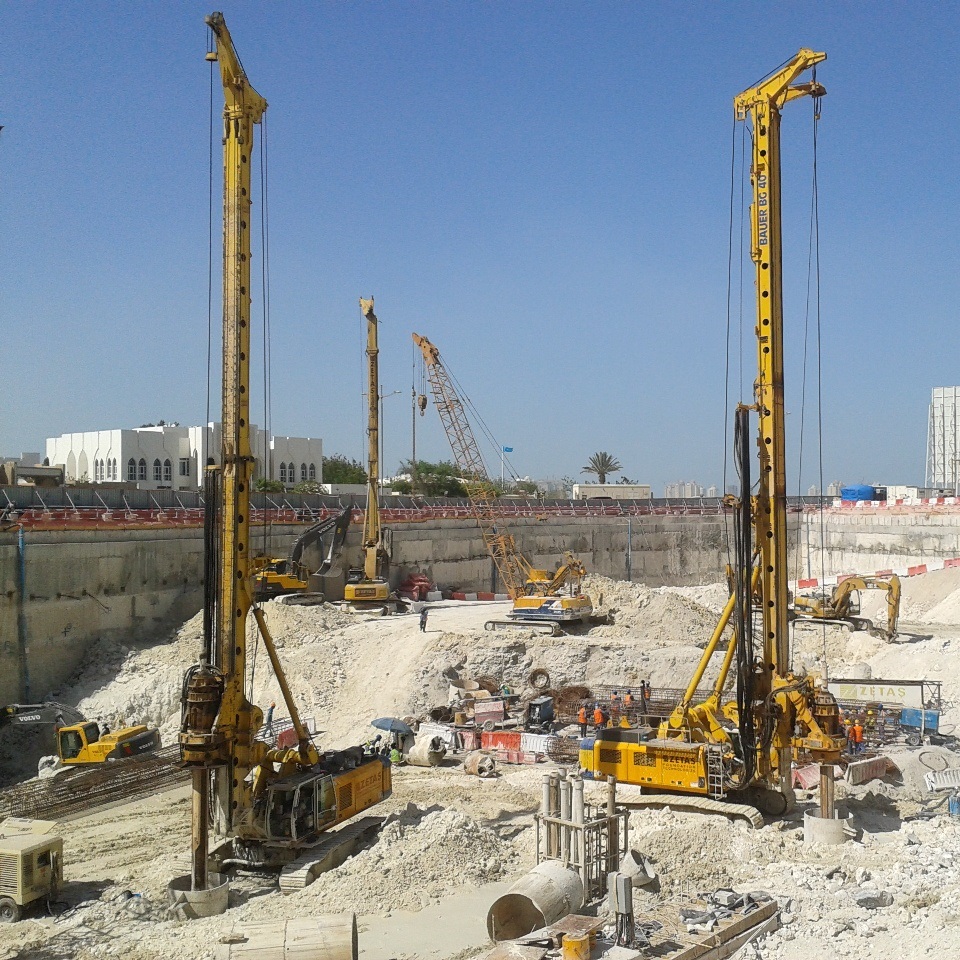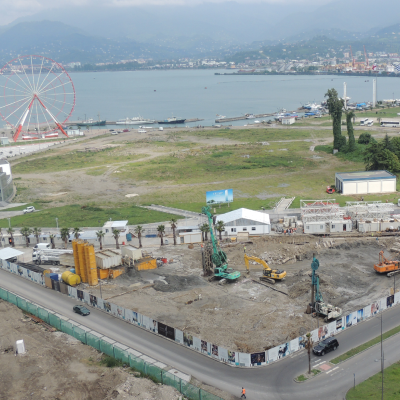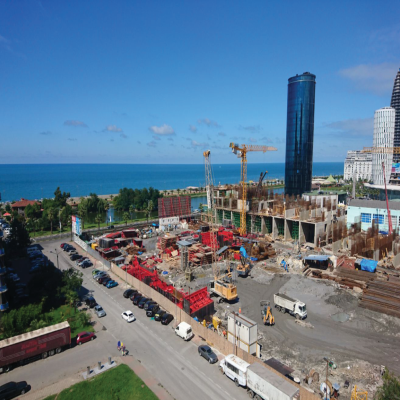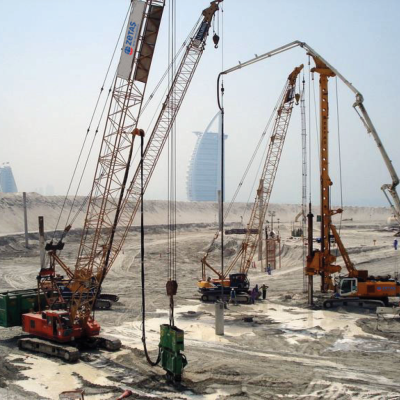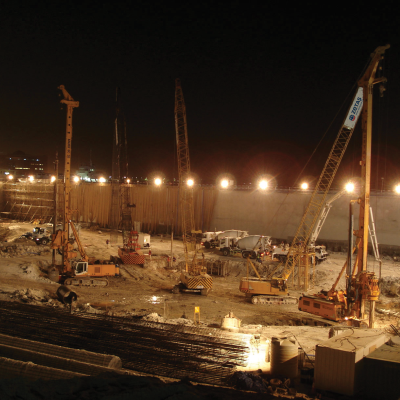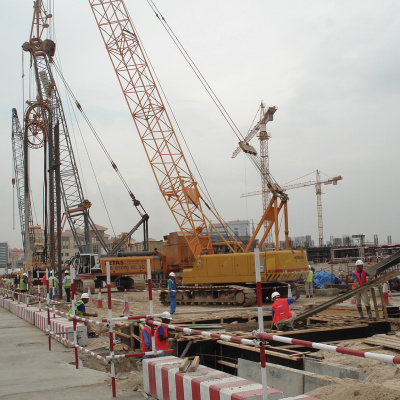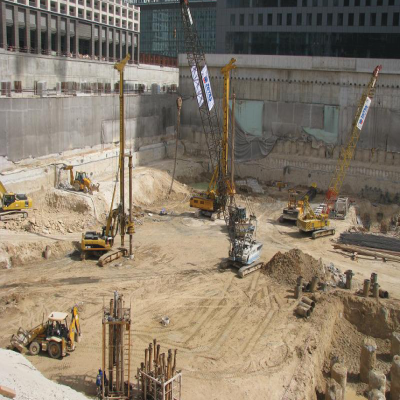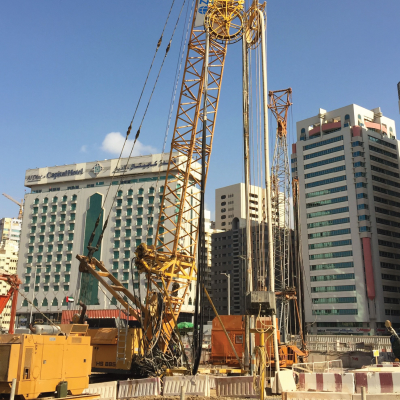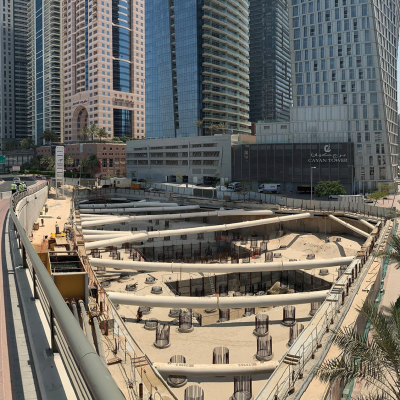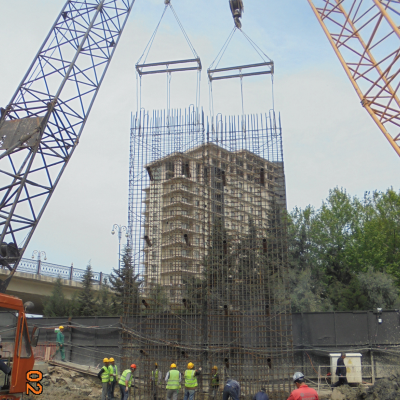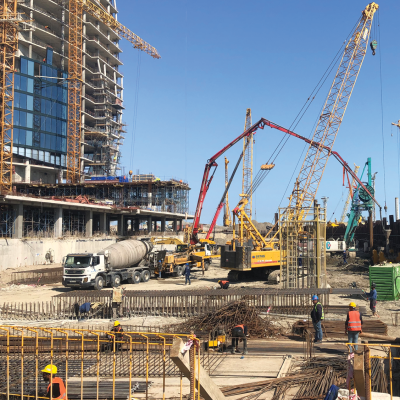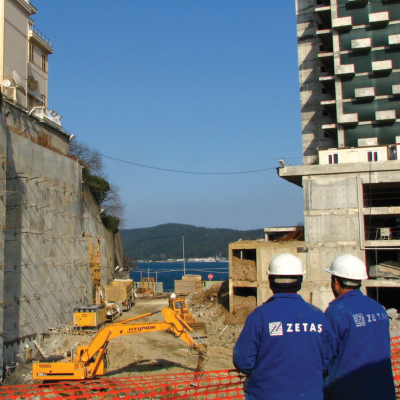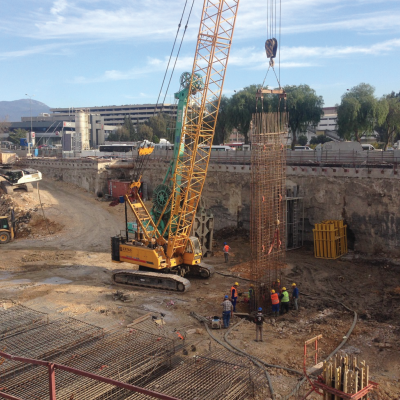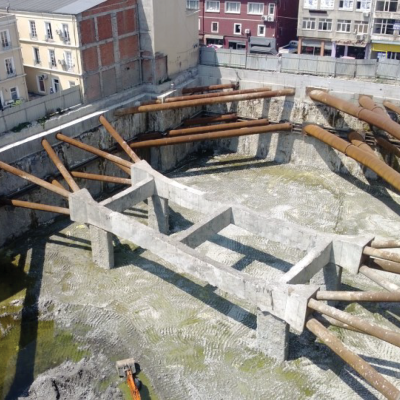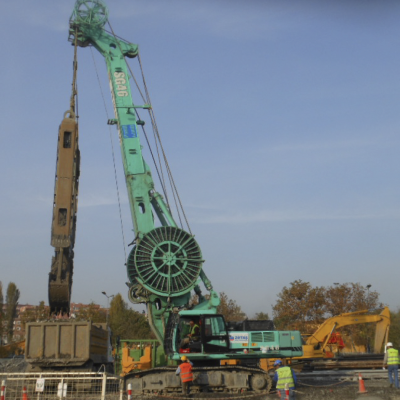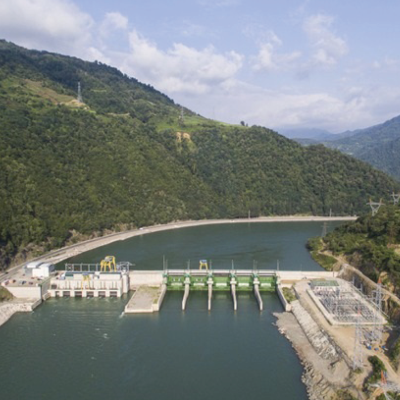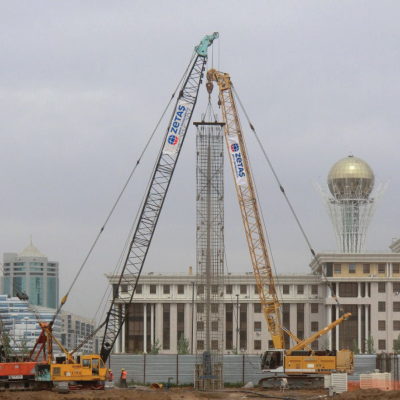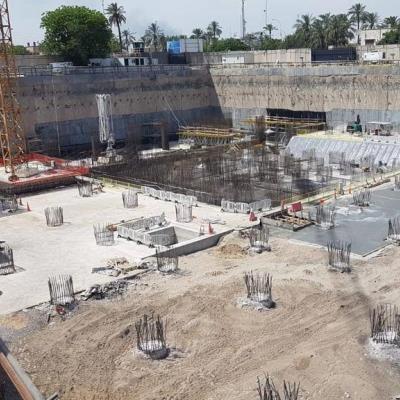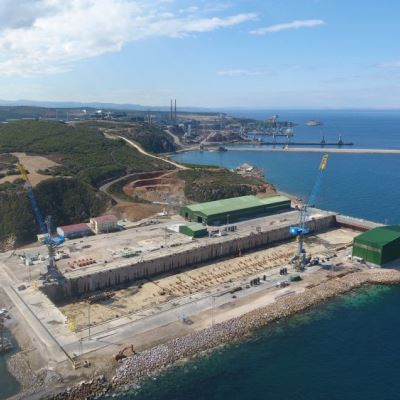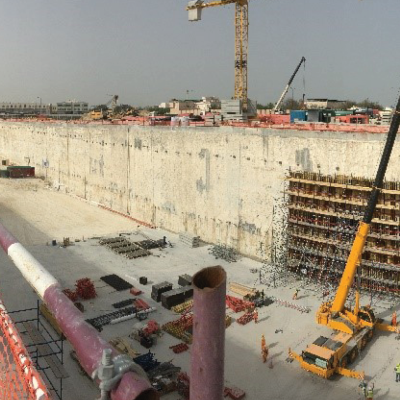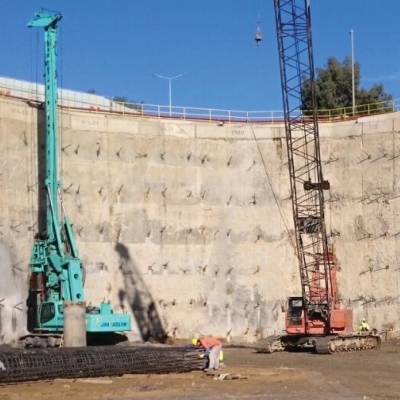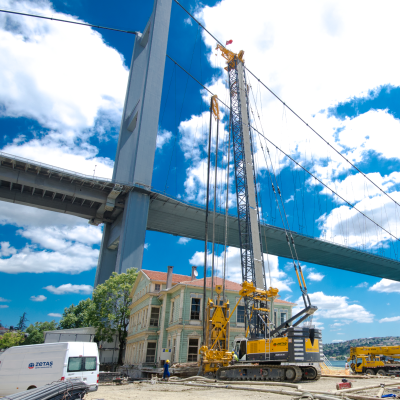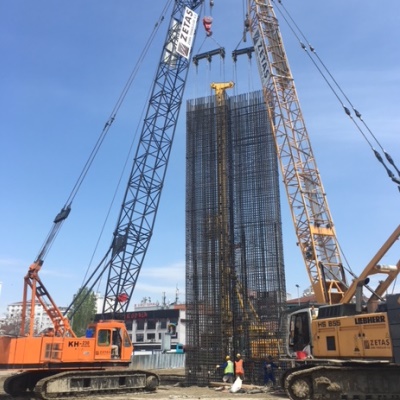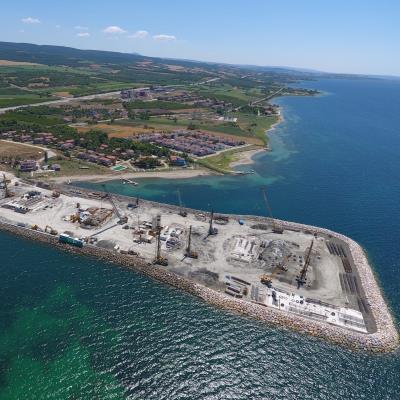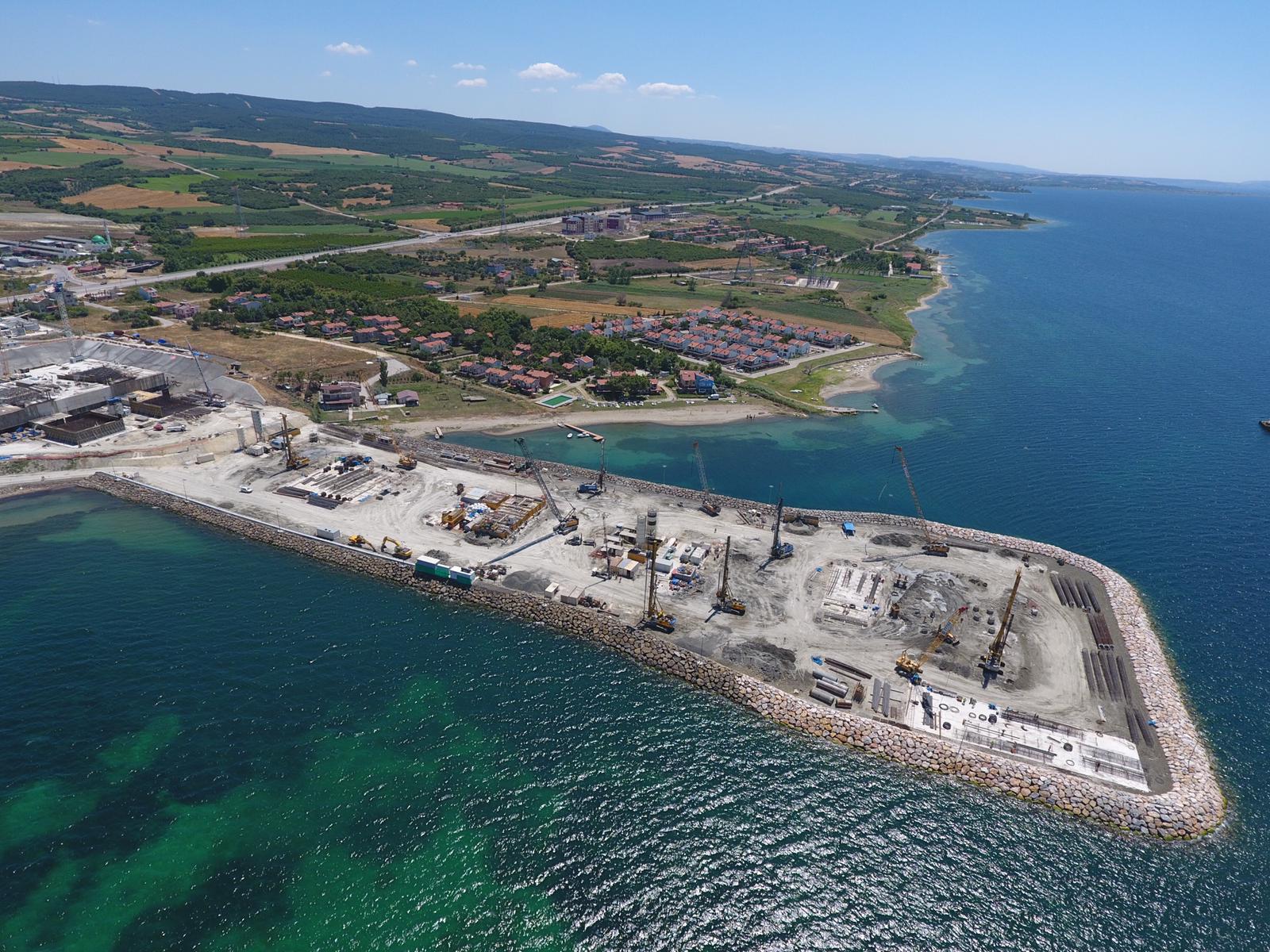In-situ cast reinforced concrete panels interlock or overcut eachother to form a continuous shoring wall by grabs or hydrofraise cutter (hydromill) machines.
A diaphragm wall is a reinforced concrete wall that is cast in sections or panels excavated in the ground. The trench held open during excavation, and installation of reinforcement and concrete by the use of a supporting slurry. The slurry forms an impervious deposit (cake) on the walls of the trench, isolating the hydraulic pressure of the slurry from the surrounding soil and ground water, such that this pressure exerts sufficient outward force to keep the trench open. The slurry mix can be based on the use of bentonite, or polymers or a mixture of the two.
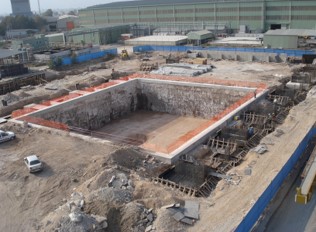
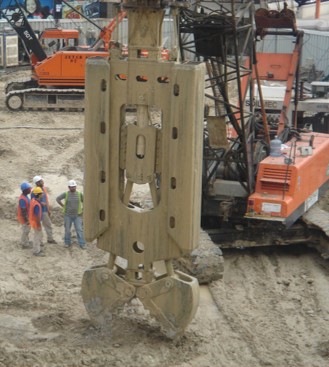
The temporary guide walls are constructed in advance and consist of two reinforced-concrete sections depending on the thickness of diaphragm wall to be implemented. The guide walls can be either cast-in-situ or precast. Individual panel lengths are determined by a number of factors including trench stability and the sensitivity of the surroundings to movement, or intensity of the reinforcement. The wall can be constructed very close to existing structures though a minimum clearance is required for the thickness of the guide wall. When excavation of a panel is complete the slurry is treated to reduce the quantity of solids in suspension to a predetermined acceptable level.
Upon completion of excavation of panel, the reinforcement cage is installed and concrete poured using a tremie pipe from bottom to top. The standard thicknesses of diaphragm walls are in the range of 60 cm to 150 cm typically being 60 cm, 80 cm, 100 cm, 120 cm and 150 cm. Panel excavation is done by diaphragm wall machines like mechanical or hydraulic grab, and hydrofreeze.
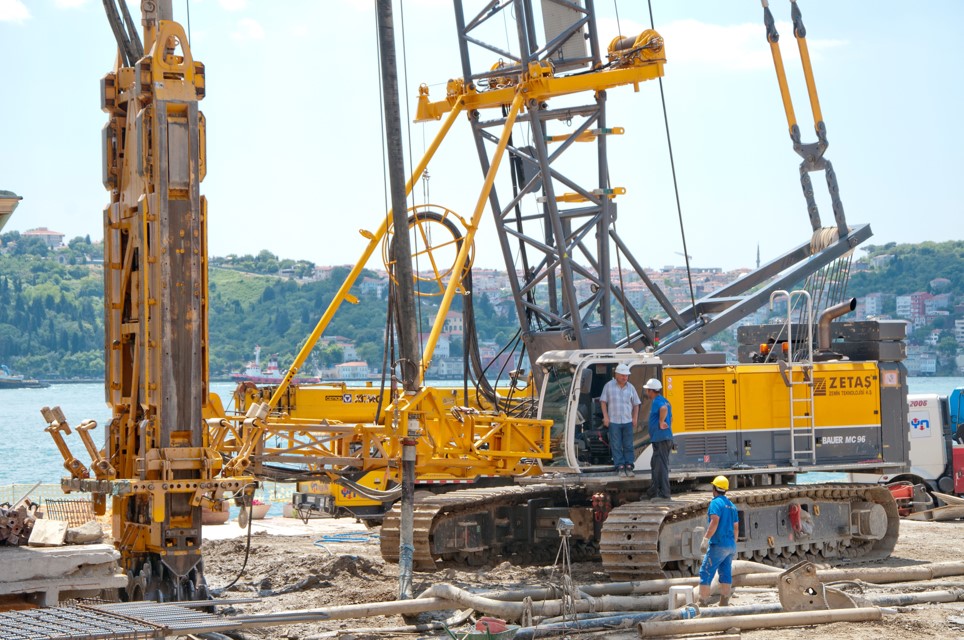
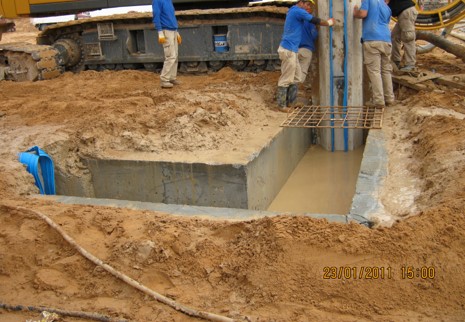
Diaphragm walls are ideal solution for deep excavation shoring structures under high ground water level. Diaphragm walls can be built as a temporary shoring structure, as well as permanent structures. Diaphragm walls give great advantages to limit deformations during shoring excavation because of their of rigidity. In addition, they have other functions, such as vertical load-bearing elements and hydraulic cut-off.
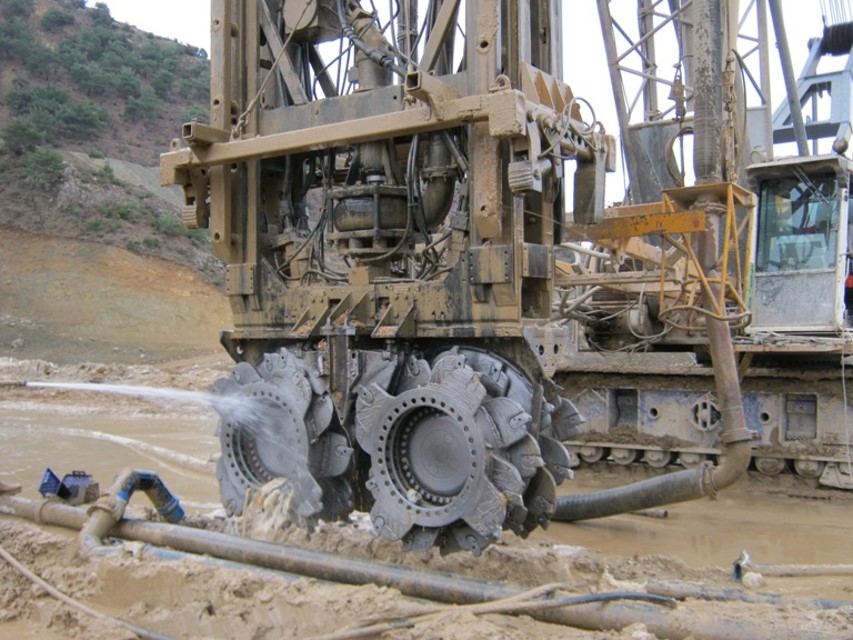
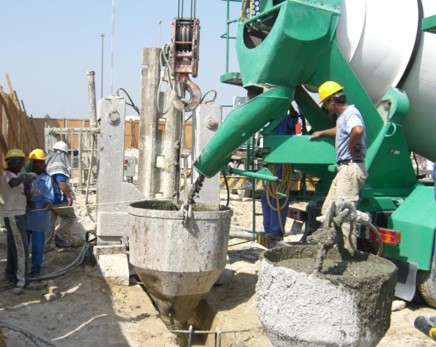
Related Projects



